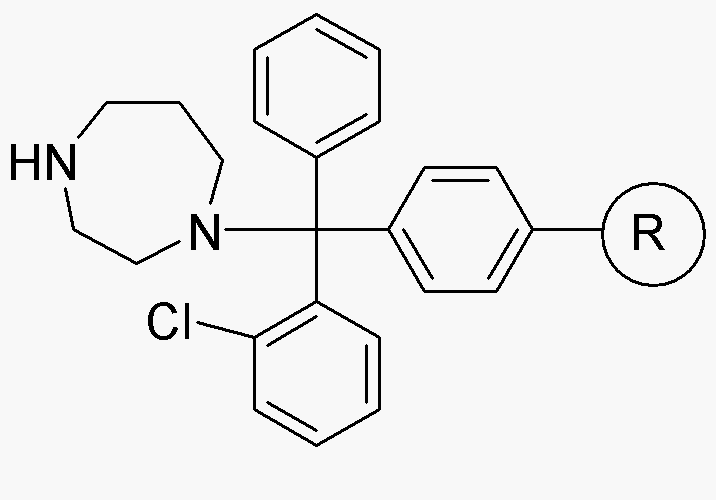N-Trityl-hexahydro-1H-1,4-diazepine, polymer bound is widely utilized in research focused on:
- Drug Development: This compound serves as a versatile building block in the synthesis of pharmaceutical agents, particularly in developing novel drugs with enhanced efficacy and reduced side effects.
- Catalysis: It is employed as a catalyst in various organic reactions, improving reaction rates and yields, making it valuable in the production of fine chemicals and agrochemicals.
- Polymer Chemistry: The polymer-bound form allows for easier handling and separation in reactions, which is beneficial in industrial applications where efficiency and cost-effectiveness are crucial.
- Biotechnology: It is utilized in the development of bioconjugates, aiding in the creation of targeted drug delivery systems that enhance therapeutic outcomes.
- Research Applications: In academic and industrial research, it is used for studying molecular interactions and mechanisms, providing insights that can lead to innovative solutions in various fields.
General Information
Properties
Safety and Regulations
Applications
N-Trityl-hexahydro-1H-1,4-diazepine, polymer bound is widely utilized in research focused on:
- Drug Development: This compound serves as a versatile building block in the synthesis of pharmaceutical agents, particularly in developing novel drugs with enhanced efficacy and reduced side effects.
- Catalysis: It is employed as a catalyst in various organic reactions, improving reaction rates and yields, making it valuable in the production of fine chemicals and agrochemicals.
- Polymer Chemistry: The polymer-bound form allows for easier handling and separation in reactions, which is beneficial in industrial applications where efficiency and cost-effectiveness are crucial.
- Biotechnology: It is utilized in the development of bioconjugates, aiding in the creation of targeted drug delivery systems that enhance therapeutic outcomes.
- Research Applications: In academic and industrial research, it is used for studying molecular interactions and mechanisms, providing insights that can lead to innovative solutions in various fields.
Documents
Safety Data Sheets (SDS)
The SDS provides comprehensive safety information on handling, storage, and disposal of the product.
Product Specification (PS)
The PS provides a comprehensive breakdown of the product’s properties, including chemical composition, physical state, purity, and storage requirements. It also details acceptable quality ranges and the product's intended applications.
Certificates of Analysis (COA)
Search for Certificates of Analysis (COA) by entering the products Lot Number. Lot and Batch Numbers can be found on a product’s label following the words ‘Lot’ or ‘Batch’.
*Catalog Number
*Lot Number
Certificates Of Origin (COO)
This COO confirms the country where the product was manufactured, and also details the materials and components used in it and whether it is derived from natural, synthetic, or other specific sources. This certificate may be required for customs, trade, and regulatory compliance.
*Catalog Number
*Lot Number
Safety Data Sheets (SDS)
The SDS provides comprehensive safety information on handling, storage, and disposal of the product.
DownloadProduct Specification (PS)
The PS provides a comprehensive breakdown of the product’s properties, including chemical composition, physical state, purity, and storage requirements. It also details acceptable quality ranges and the product's intended applications.
DownloadCertificates of Analysis (COA)
Search for Certificates of Analysis (COA) by entering the products Lot Number. Lot and Batch Numbers can be found on a product’s label following the words ‘Lot’ or ‘Batch’.
*Catalog Number
*Lot Number
Certificates Of Origin (COO)
This COO confirms the country where the product was manufactured, and also details the materials and components used in it and whether it is derived from natural, synthetic, or other specific sources. This certificate may be required for customs, trade, and regulatory compliance.


